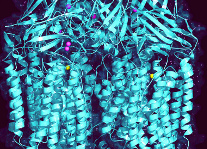Industrial biotechnology has potential to prevent 2.5 billion tonnes CO2 emissions
WWF predicts industrial biotechnology has potential to prevent emissions of between 1 and 2.5 billion tonnes of CO2 equivalent per year by 2030.

 Last September, the WWF predicted industrial biotechnology has the potential to prevent emissions of between 1 and 2.5 billion tonnes of CO2 equivalent per year by 2030.
Last September, the WWF predicted industrial biotechnology has the potential to prevent emissions of between 1 and 2.5 billion tonnes of CO2 equivalent per year by 2030.
The addition of enzymes, or proteins that operate biologically to accelerate or slow the rate of chemical reactions, spearheads the movement of 'white biotechnology'-often overlooked as a viable alternative by both investors and government.
Enzymes have worked for years in products ranging from laundry detergent to food: reducing washing temperatures, sustaining shelf life, and increasing yield.
The novelty of industrial biotechnology is its ability to utilize nature to solve nature's problems. White biotechnology has the potential to utilize our waste to produce energy, creating a continuous cycle of use and renewal.
Perhaps, the greatest capability of enzymatic addition lies in the development of advanced biofuel technology. In the United States, the bioethanol industry is booming and investors expect the market to continue to grow.
In 2007, the US Renewable Fuel Standard passed, requiring annual production to rise to 36 billion gallons of biofuel by 2022. The technology behind bioethanol lies in an enzyme that acts to release sugars from the starch in kernels. But, this is only the beginning because there is a downside to corn ethanol as well:
By clearing land to plant additional crops, experts believe that greenhouse emissions will actually increase and might even double due to emissions produced from deforestation and conversion of grasslands.
But the breakthrough, or "holy grail of biofuel," as Lars Jensen, president of Novozymes Europe believes, is to solve the question: "how can you move from using sugar and corn to using the straw, stalks and other agricultural waste?" Unlocking the potential to make what is now garbage into usable energy.
Markets in Europe for biofuel are also expected to grow. 2009's Renewable Fuels Directive set the target of a 10% share of 'green fuel' in transport by 2020.
And while estimates posit corn ethanol will produce a 12-18% net reduction in greenhouse gas emissions, cellulosic ethanol (derived from cellulose present in the cell walls of all plants) could cut carbon emissions by 86-94%.
Even if it remains unclear whether tranforming land to produce biofuel will do more harm than good, it is clear that this breakthrough represents the first steps towards a closed-loop system of renewable energy, similar to the water or nitrogen cycle that occurs as a natural part of the earth's ecosystem.
And, as Novozymes' president concludes, "We have the enabling technology ready, now someone has to build a factory using it."
Author: Michael Good | Climate Action
Image Credits: antaean/Flickr; Argonne National Laboratory/Flickr






